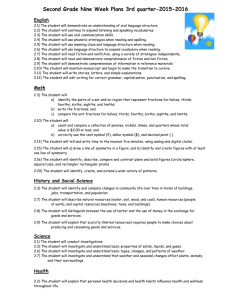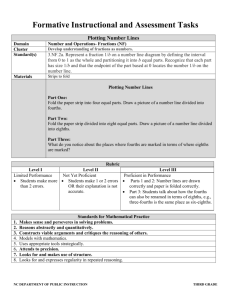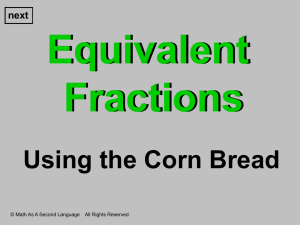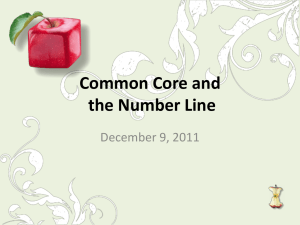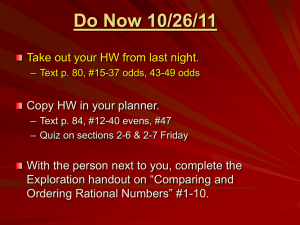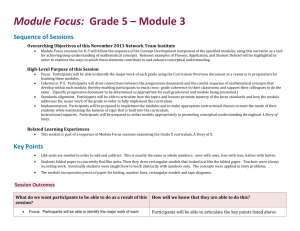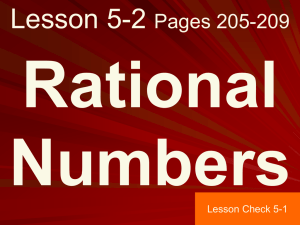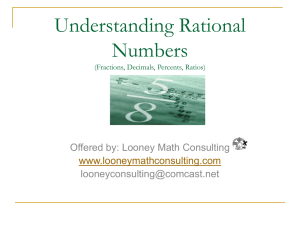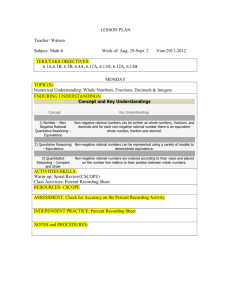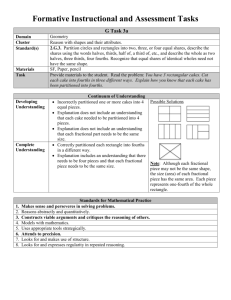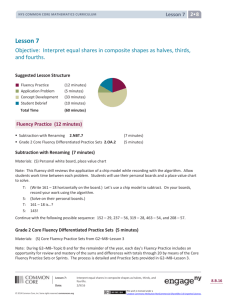Priority Math Objectives Grades 3-5
advertisement
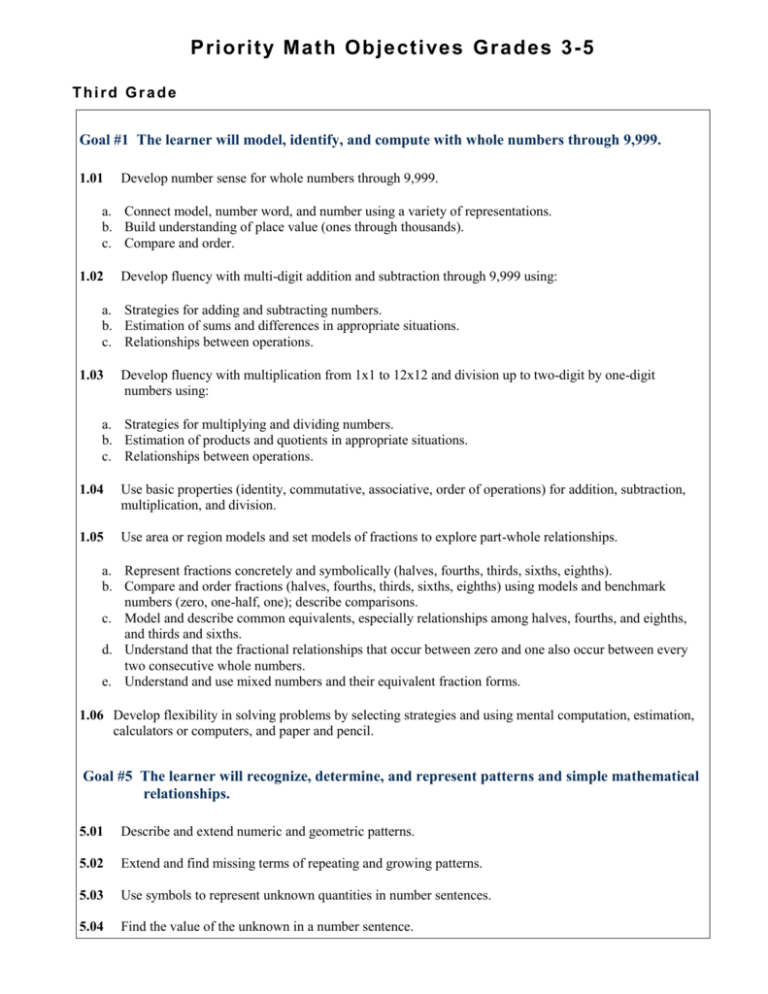
Priorit y Math Objecti ves Grades 3-5 Third Grade Goal #1 The learner will model, identify, and compute with whole numbers through 9,999. 1.01 Develop number sense for whole numbers through 9,999. a. Connect model, number word, and number using a variety of representations. b. Build understanding of place value (ones through thousands). c. Compare and order. 1.02 Develop fluency with multi-digit addition and subtraction through 9,999 using: a. Strategies for adding and subtracting numbers. b. Estimation of sums and differences in appropriate situations. c. Relationships between operations. 1.03 Develop fluency with multiplication from 1x1 to 12x12 and division up to two-digit by one-digit numbers using: a. Strategies for multiplying and dividing numbers. b. Estimation of products and quotients in appropriate situations. c. Relationships between operations. 1.04 Use basic properties (identity, commutative, associative, order of operations) for addition, subtraction, multiplication, and division. 1.05 Use area or region models and set models of fractions to explore part-whole relationships. a. Represent fractions concretely and symbolically (halves, fourths, thirds, sixths, eighths). b. Compare and order fractions (halves, fourths, thirds, sixths, eighths) using models and benchmark numbers (zero, one-half, one); describe comparisons. c. Model and describe common equivalents, especially relationships among halves, fourths, and eighths, and thirds and sixths. d. Understand that the fractional relationships that occur between zero and one also occur between every two consecutive whole numbers. e. Understand and use mixed numbers and their equivalent fraction forms. 1.06 Develop flexibility in solving problems by selecting strategies and using mental computation, estimation, calculators or computers, and paper and pencil. Goal #5 The learner will recognize, determine, and represent patterns and simple mathematical relationships. 5.01 Describe and extend numeric and geometric patterns. 5.02 Extend and find missing terms of repeating and growing patterns. 5.03 Use symbols to represent unknown quantities in number sentences. 5.04 Find the value of the unknown in a number sentence. Grade 4 Goal #1 The learner will read, write, model, and compute with non-negative rational numbers. 1.01 a. b. c. d. 1.02 a. b. c. d. e. Develop number sense for rational numbers 0.01 through 99,999. Connect model, number word, and number using a variety of representations. Build understanding of place value (hundredths through ten thousands). Compare and order rational numbers. d) Make estimates of rational numbers in appropriate situations. Develop fluency with multiplication and division: Two-digit by two-digit multiplication (larger numbers with calculator). Up to three-digit by two-digit division (larger numbers with calculator). Strategies for multiplying and dividing numbers. Estimation of products and quotients in appropriate situations. Relationships between operations. 1.03 Solve problems using models, diagrams, and reasoning about fractions and relationships among fractions involving halves, fourths, eighths, thirds, sixths, twelfths, fifths, tenths, hundredths, and mixed numbers. 1.04 Develop fluency with addition and subtraction of non-negative rational numbers with like denominators, including decimal fractions through hundredths. a. Develop and analyze strategies for adding and subtracting numbers. b. Estimate sums and differences. c. Judge the reasonableness of solutions. 1.05 Develop flexibility in solving problems by selecting strategies and using mental computation, estimation, calculators or computers, and paper and pencil. Goal #5 The learner will demonstrate an understanding of mathematical relationships. 5.01 Identify, describe, and generalize relationships in which: a. Quantities change proportionally. b. Change in one quantity relates to change in a second quantity. 5.02 Translate among symbolic, numeric, verbal, and pictorial representations of number relationships. 5.03 Verify mathematical relationships using: a. Models, words, and numbers. b. Order of operations and the identity, commutative, associative, and distributive properties. Grade 5 Goal# 1 The learner will understand and compute with non-negative rational numbers. 1.01 a. b. c. d. 1.02 Develop number sense for rational numbers 0.001 through 999,999. Connect model, number word, and number using a variety of representations. Build understanding of place value (thousandths through hundred thousands). Compare and order rational numbers. Make estimates of rational numbers in appropriate situations. Develop fluency in adding and subtracting non-negative rational numbers (halves, fourths, eighths; thirds,; mixed numbers). a. Develop and analyze strategies for adding and subtracting numbers. b. Estimate sums and differences. c. Judge the reasonableness of solutions. 1.03 Develop flexibility in solving problems by selecting strategies and using mental computation, estimation, calculators or computers, and paper and pencil. Goal# 5 The learner will demonstrate an understanding of patterns, relationships, and elementary algebraic representation. 5.01 Describe, extend, and generalize numeric and geometric patterns using tables, graphs, words, and symbols. 5.02 Use algebraic expressions, patterns, and one-step equations and inequalities to solve problems. 5.03 Identify, describe, and analyze situations with constant or varying rates of change.
